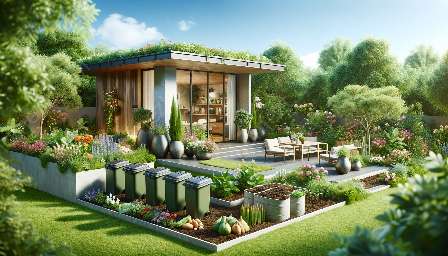Composting is an excellent way to reduce waste and create nutrient-rich soil for your yard and patio. One of the most important decisions in starting your composting journey is choosing the right compost bin. There are various factors to consider when selecting a compost bin, including the type, size, material, and features that best fit your needs and environment. In this comprehensive guide, we will explore the different types of compost bins, their benefits, and how to choose the perfect one for your composting needs.
Why Compost?
Composting is the process of breaking down organic materials such as food scraps, yard waste, and other biodegradable items into a rich, dark, and crumbly substance known as compost. This compost can then be used to enrich the soil in your yard and patio, providing essential nutrients for plant growth and improving soil structure.
Types of Compost Bins
When it comes to choosing a compost bin, there are several options to consider. The most common types of compost bins include:
- Traditional Compost Bins: These can be simple open bins or enclosed containers with lids. They are versatile and suitable for a variety of composting materials.
- Tumbling Composters: These bins are designed to be rotated, which helps speed up the composting process by aerating the materials inside.
- Vermicomposting Bins: Also known as worm bins, these are ideal for indoor or small-space composting, as they utilize worms to break down organic matter.
- Automatic Composters: These high-tech bins are designed to accelerate the composting process with features such as temperature control and automatic mixing.
Factors to Consider When Choosing a Compost Bin
When selecting a compost bin, there are several important factors to consider:
- Size: Consider the amount of organic waste you generate and choose a bin size that can accommodate your needs without taking up too much space.
- Material: Compost bins are commonly made from plastic, wood, metal, or recycled materials. Each material has its own benefits in terms of durability, insulation, and aesthetics.
- Accessibility: Consider how you will access the finished compost. Some bins have multiple compartments or doors for easy removal of compost.
- Aeration: Good aeration is essential for the composting process. Some bins have built-in aeration systems, while others may require manual turning or tumbling.
- Location: Think about where you will place the compost bin. Consider factors such as sunlight, drainage, and proximity to your kitchen or garden.
Best Compost Bins for Yard and Patio
There are numerous compost bins on the market, each with its own set of features and benefits. Some popular options for yard and patio composting include:
- Envirocycle Compost Tumbler: This compact, aesthetically pleasing tumbler is perfect for small spaces and offers easy tumbling for efficient composting.
- Redmon Green Culture Compost Bin: Made from 100% recycled materials, this affordable and durable bin is ideal for traditional composting in a yard or patio setting.
- Worm Factory 360 Worm Composter: For those interested in vermicomposting, this system provides a convenient way to compost kitchen scraps and other organic matter using worms.
- Geobin Compost Bin: This versatile, expandable bin is great for yard composting and can hold a large volume of compost, making it suitable for larger outdoor spaces.
Conclusion
Choosing the right compost bin is a critical step in the composting process. By considering the type, size, material, and features that best fit your needs and environment, you can make an informed decision that will contribute to a successful composting experience. Whether you opt for a traditional bin, a tumbling composter, a worm bin, or a high-tech automatic composter, composting in your yard or patio can lead to the creation of valuable organic matter for your garden and an environmentally friendly approach to waste management.


